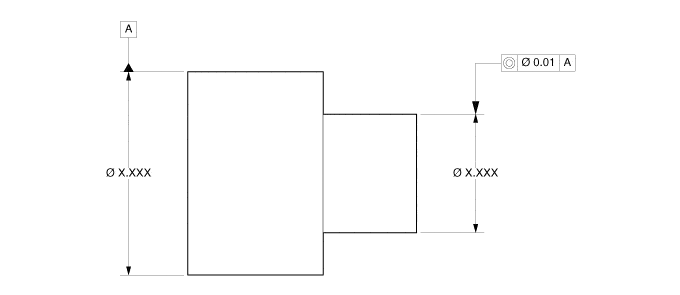
CONCENTRICITY (KON-SEN-TRI-SI-TEE)
THAT CONDITION WHERE THE MEDIAN POINTS OF ALL DIAMETRICALLY OPPOSED ELEMENTS OF A FIGURE OF REVOLUTION (OR CORRESPONDINGLY-LOCATED ELEMENTS OF TWO OR MORE RADIALLY-DISPOSED FEATURES) ARE CONGRUENT WITH THE AXIS (OR CENTER POINT) OF A DATUM FEATURE.
Since the concentricity definition (i.e., ANSI Y14.5-1994) is a matter of inspection, we will address concentricity in more simpler terms and specifically as it relates to the subject of workholding.
Workholding performs two basic functions.
- Positions the part appropriately.
- Grips the part sufficiently to resist part movement against cutting forces.
Positioning the part in this context means to center the cylindrical part shape to a given tolerance. If you believe your workholding system is preventing you from realizing the desired concentricity results, what can contribute to this?
- Workholding accuracy
- Chuck repeatability
- Jaw forming technique
- Jaw lifting
- Worn chuck
It might be worth reviewing the definition of both “workholding accuracy” and that of “chuck repeatability.” Then we can compare them to each other.
Accuracy is a TIR measurement of the chucking system while gripping a master test bar. The resulting run out would be a composite resultant of the following factors: Chuck condition, soft jaw forming technique, hydraulic pressure setting, mechanical alignment of the machine turret/spindle, etc.
Chuck repeatability is a static (i.e., radial) measurement that isolates the chuck’s unique performance to repeatedly hold the original position as established during the “Accuracy” test.
A user might observe the accuracy (i.e., TIR) to be .005″, but the repeatability (radial measure) to be .0004″ (or .0008″ when converted to TIR). We could conclude that everything in excess of the repeatability value (x2) would be from variables beyond that of the chuck itself. We can also conclude that if these surrounding issues were completely corrected, the eventual shaft run-out would drop to .0008” as determined via the repeatability test.

